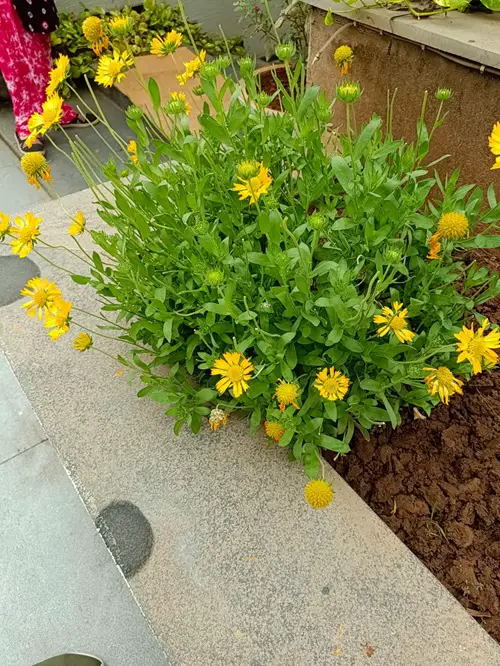Regularly need a pail of water to hydrate? These Plants That Prefer Dry Soil go against the norm. Let’s explore!
Not all plants need fertile, moist, rich soil to grow in. There’s a whole world of flora that has adapted and thrives in dry, arid climes with sandy, rocky, gritty soils that barely hold any water. Perfect for xeriscapes and busy gardeners alike, check out these plants that prefer dry soil!
Plants that Prefer Dry Soil
1. Butter Daisy
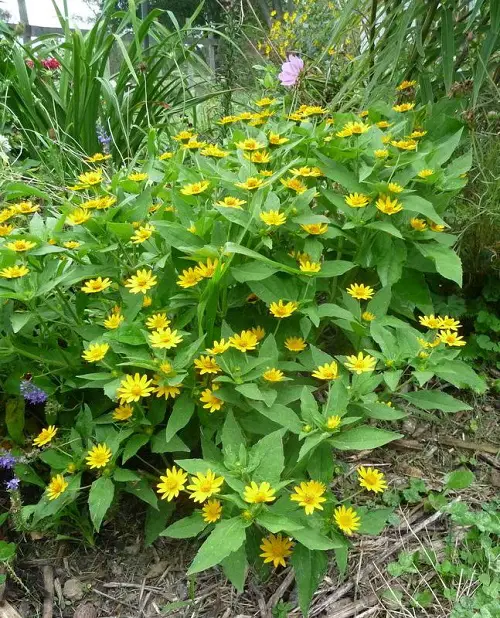
Botanical Name: Melampodium divaricatum
Native to the arid regions from Mexico to Brazil, this daisy-like yellow flower blooms from summer until frost. And these cute flower plants grow without the constant need to water them!
The reason why butter daisy thrives in dry soils due to its deep root system, which masterfully absorbs water in the most arid conditions once it matures.
2. Rosemary
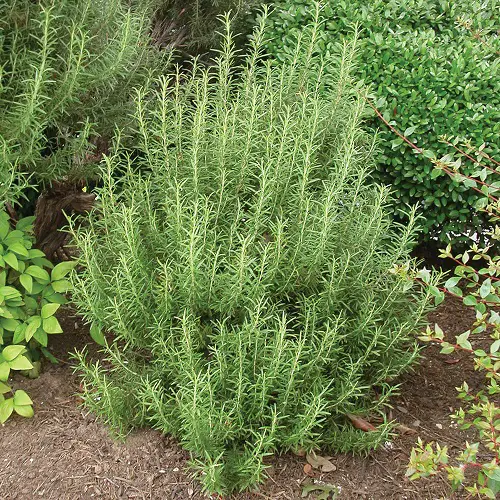
Botanical Name: Salvia rosmarinus
Known for its aromatic flavors, rosemary is a perennial evergreen herb that tolerates drought conditions and most soil types except clay. With needle-like, closely-spaced fragrant leaves, rosemary is naturally found in dry, rocky areas.
Producing tiny purple blooms in spring and summer, this bees and butterfly magnet can grow up to five feet tall. It thrives in full sun and well-draining neutral soils. Water it when the top soil is dry to the touch. Check out these rosemary-growing hacks for more.
3. Allium
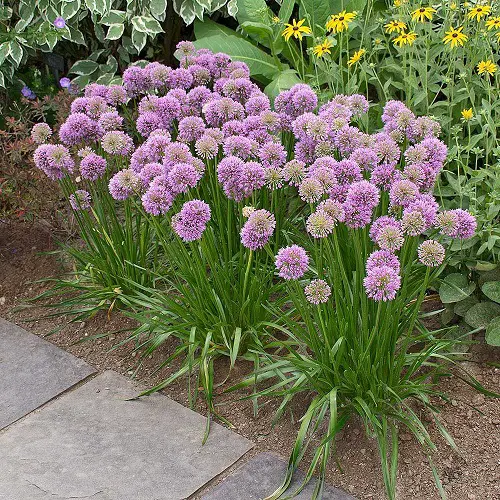
Botanical Name: Allium cepa
Also known as ornamental onions, alliums do well in dry soil and high-altitude regions. By storing water in their bulbs, they have evolved and learned to survive harsh conditions. They get their name from the garlic and onion scent their foliage emits but are toxic to ingest.
While drought-tolerant, allium bulbs do enjoy intermittent watering during dry spells.
4. Globe Amaranth

Botanical Name: Gomphrena globosa
Globe amaranth requires very little care. Once established, it grows perfectly in full sun, requires little watering, and prefers dry soil. This summer annual has flowers with sphere-shaped, colorful, clover-like flowerheads. Cut and dried blooms are known to retain shape and color, making them popular in floral arts and decor.
It prefers warmth, full sun, and slightly moist soil until it matures, at which point it becomes quite drought-tolerant.
5. Black-eyed Susan
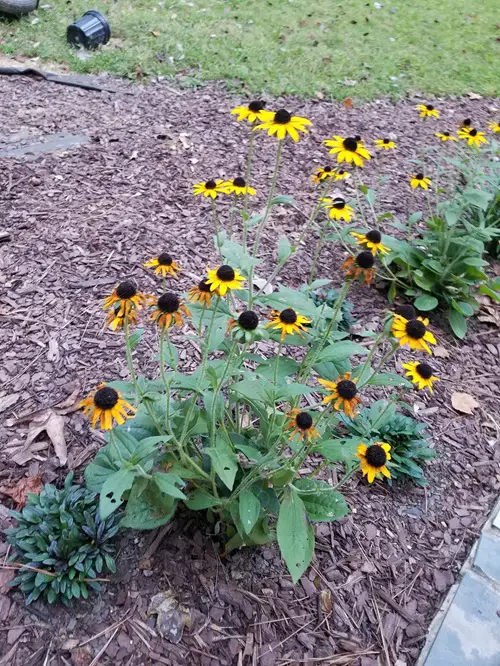
Botanical Name: Rudbeckia hirta
Often confused for sunflowers, black-eyed susan is drought-tolerant once mature and grows well in average, well-draining soil. This plant has bright yellow flowers with dark brown centers that bloom from summer to fall and can grow up to four feet tall.
When growing, it prefers moist, loamy soil and needs full sun to thrive. It can be a bit prickly, so be careful.
6. Smoke Bush
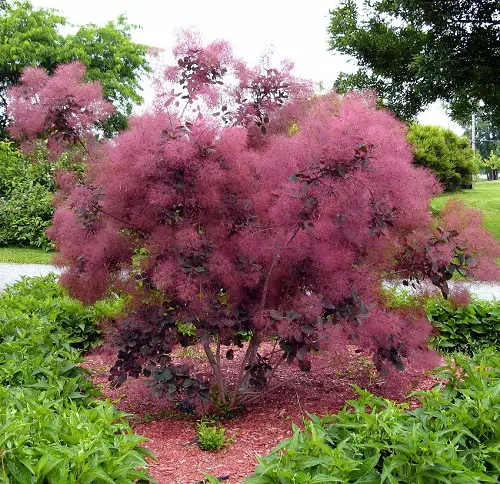
Botanical Name: Cotinus coggygria
The smoke bush is a deciduous shrub that grows naturally in areas with rocky, poor soils. Its blue-green foliage turns red, gold, or purple during fall. The shrub gets its name from the airy, smoke-like flower clusters that appear in summer.
A good source of tannins, this medicinal plant tolerates a range of soil types, from clay to sandy, acidic to alkaline, and can grow in partial to full sun.
7. Lavender

Botanical Name: Lavandula
Lavender, especially French and Spanish types, doesn’t merely survive in dry soils; they thrive in hot, dry climates. This member of the mint family is native to the Mediterranean region. To enjoy its iconic spikes with bright purple, fragrant flowers, and greenish-silver leaves, give it well-draining dry soil, slightly on the alkaline side, and full sun.
8. Moss Rose
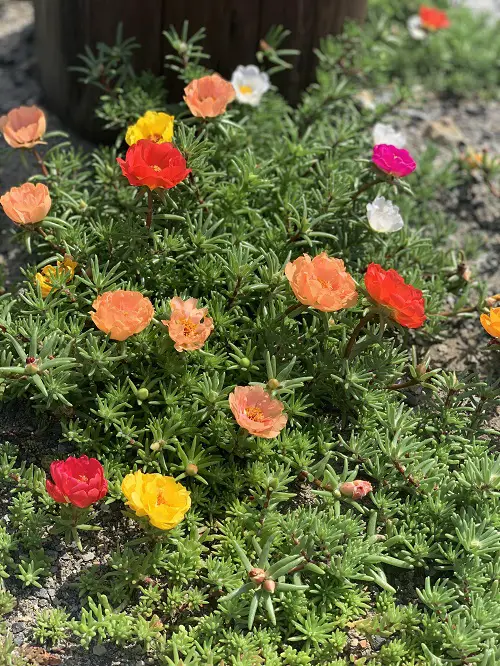
Botanical Name: Portulaca grandiflora
The moss rose is a succulent flowering plant native to South America. Despite its similar appearance, it isn’t a true rose. As with most succulents, it is highly drought—and heat-tolerant, and its thick, fleshy, needle-like leaves store ample water. It produces saucer-shaped blooms in white, peach, and other warm hues from late spring until frost.
Thriving in full sun and well-draining rocky, gritty soil, its blooms typically open with the first ray of sunlight and close by night. Here are more moss rose growing tips for you to follow.
9. Century Plant

Botanical Name: Agave americana
Next on our list of plants that prefer dry soil is Agave. This perennial succulent herb has fleshy, sword-shaped leaves, much like those of a pineapple plant, but on a bigger scale. When it blooms, its flower stalk can grow up to 40 feet tall! Commonly used for spirits like tequila, mezcal, and pulque, this Mexican native also has a host of medicinal properties.
Agave thrives in shallow, extremely dry, low-fertility, saline soils and can even colonize bare sand.
10. Cactus

Botanical Name: Cactaceae
Almost all cacti are experts at confronting and thriving in arid and hostile settings. They store water in their pads and have spines and ribbed exteriors to deter predators and prevent water loss.
They possess shallow, wide, fibrous roots that remain towards the soil surface to slurp up every little drop of rainwater.
11. Russian Sage

Botanical Name: Perovskia atriplicifolia
Russian sage is a master adapter, growing in conditions where most others fail. With woody stems and a deep root system, this sun-loving herb thrives in well-draining, acidic to alkaline soil. It does not mind pollution, poor fertility, grazers like deer and rabbits, or high salinity.
This perennial shrub produces long-lasting blooms and is perfect for xeriscaping. It faces stiff competition with lavender, though.
12. Beardtongue

Botanical Name: Penstemon digitalis
Beardtongue is a hybrid perennial that can handle dry soil due to its deep taproot. Its standout features are tall spikes of white, tubular flowers and red-purple stems and leaves. However, its foliage turns greener with age.
Thriving in well-draining loamy soils, it cannot stand ‘wet feet’, which leads to root rot in this plant.
13. Fountain Grass
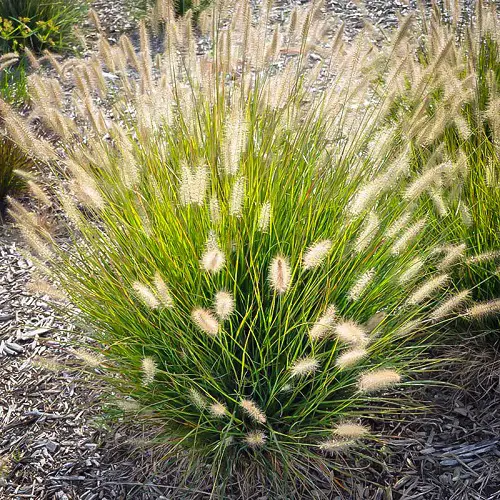
Botanical Name: Pennisetum setaceum
Fountain grass is a clumping herbaceous member of the Poaceae family characterized by its arching red-purple leaves and spikelets of purplish flowers. Its clumping behavior allows efficient water usage. This deer-tolerant plant is also an obnoxious weed, quickly colonizing your garden if left unattended.
It needs ample sun and well-draining, moist soil while growing but is drought-tolerant once established. Check out these varieties that grow well in containers.
14. Garden Verbena
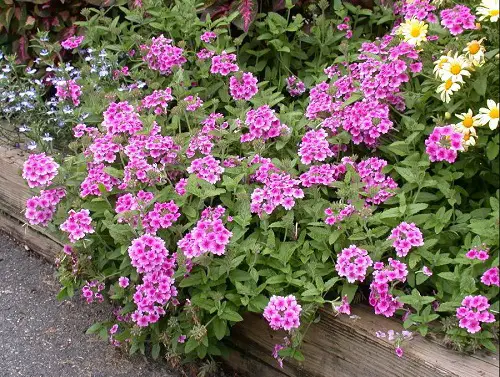
Botanical Name: Verbena hybrida
Garden verbena are hybrids specifically modified to be superior to the natural species in terms of adaptability. They can withstand dry soil due to their drought-resistant roots. You can spot them in a mounding, trailing, or upright form with clusters of small flowers in many colors throughout the spring, summer, and early fall.
This hybrid needs at least six hours of full sun daily and prefers slightly acidic to neutral soil.
15. Madagascar Periwinkle

Botanical Name: Catharanthus roseus
Madagascar periwinkle is an evergreen perennial that produces pretty pink, white, and red flowers year-round in warm climes. It is used as ground cover or bordering plants in drier regions and has medicinal properties.
It prefers full, dappled sun and well-draining acidic soil but can tolerate a range of soil types.
16. Scabiosa
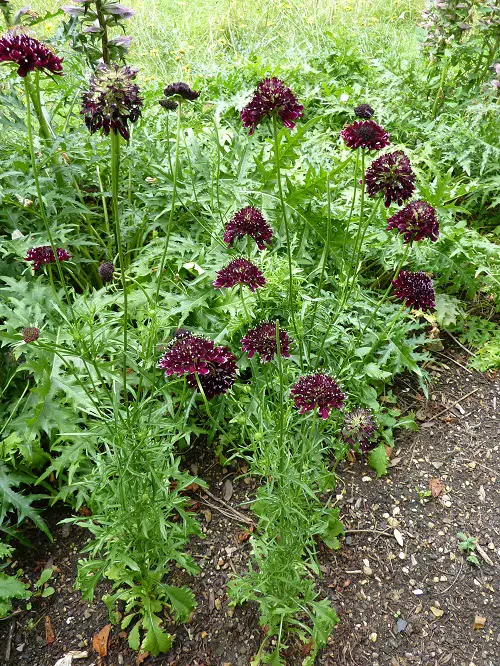
Botanical Name: Scabiosa atropurpurea
Also called the pincushion flower, this ornamental Mediterranean native produces bushy blooms in scarlet, blue, pink, and white. Its foliage is green and slightly fuzzy. The plant likes cooler environments and does well as an annual in USDA zones 4-6.
Plant it in alkaline, rich, and well-draining soil. And remember, it needs full sun to thrive.
17. Floppy Yucca
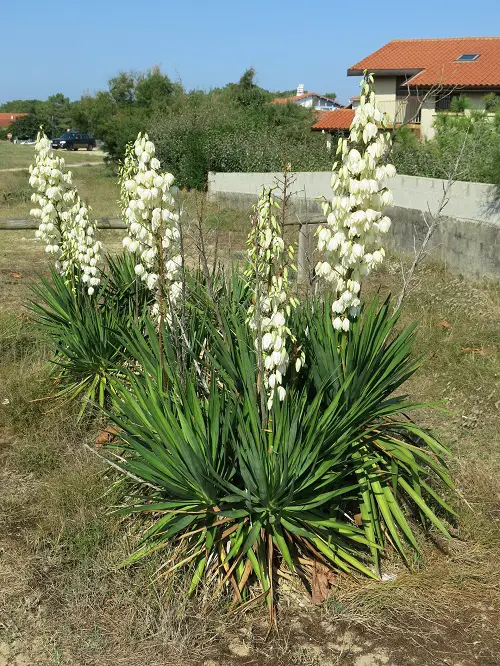
Botanical Name: Yucca flaccida
Floppy yucca is an evergreen shrub of the asparagus family. It has tough, spiky leaves that poke out from an underground stem. Along with pretty foliage, it produces tall spikes of white, bell-shaped flowers.
It prefers slightly rich, sandy soil but can tolerate and adapt to poor, dry, well-draining soil. Often found in desert landscapes, check out these varieties of yuccas you can grow at home.
18. Yarrow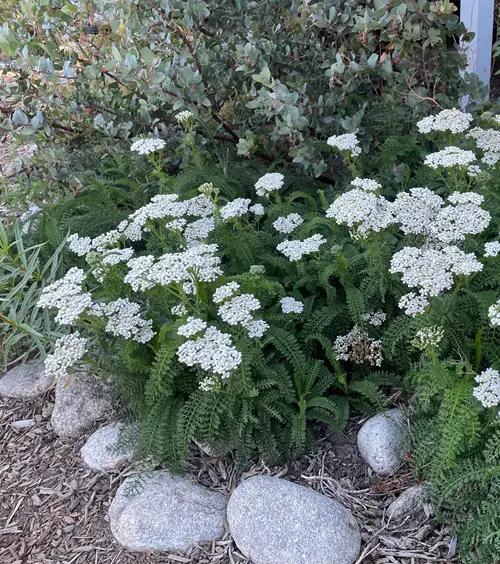
Botanical Name: Achillea millefolium
Yarrows are members of the aster family and low-maintenance perennials with lovely white, yellow, pink, and red flowers. These plants prefer hot, dry soils and have deep taproots.
Constantly wet soil hinders their breathing ability, leading to rot, so you don’t need to water them too much.
19. Catnip
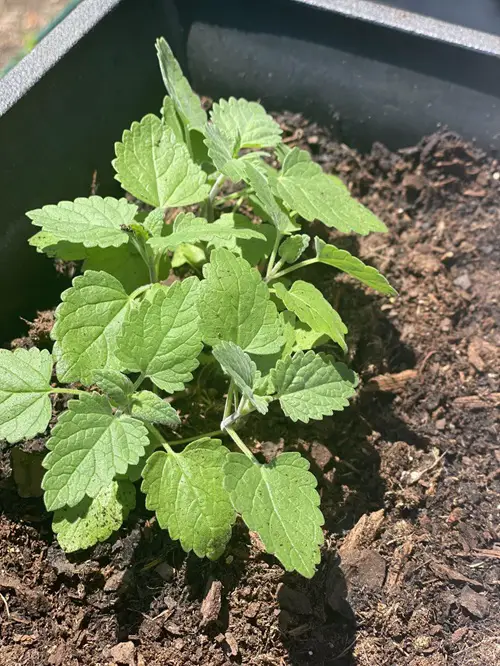
Botanical Name: Nepeta cataria
Catnip is a feline dream come true! And also popular amongst gardeners. Its lavender-blue flowers bloom all summer, attracting butterflies and bees. It also contains a feline attractant called nepetalactone that will drive your furry baby delirious with pleasure!
This perennial herb thrives in dry and lean soils, which help it flower better and mimic its native habitat of the sunny, rocky slopes of the Mediterranean. Once established, it’s drought-tolerant and needs ample air circulation. Here’s how to grow catnip at home.
20. Blanket Flower
Botanical Name: Gaillardia
Also called blanket flowers, these sun-worshipping garden divas have long-lasting, daisy-like flowers in fiery red, orange, and yellow. They thrive in full sun and prefer fast-draining, dry, arid soil. Water them once, soak the soil, and let it dry out, and your gaillardias will thank you.


